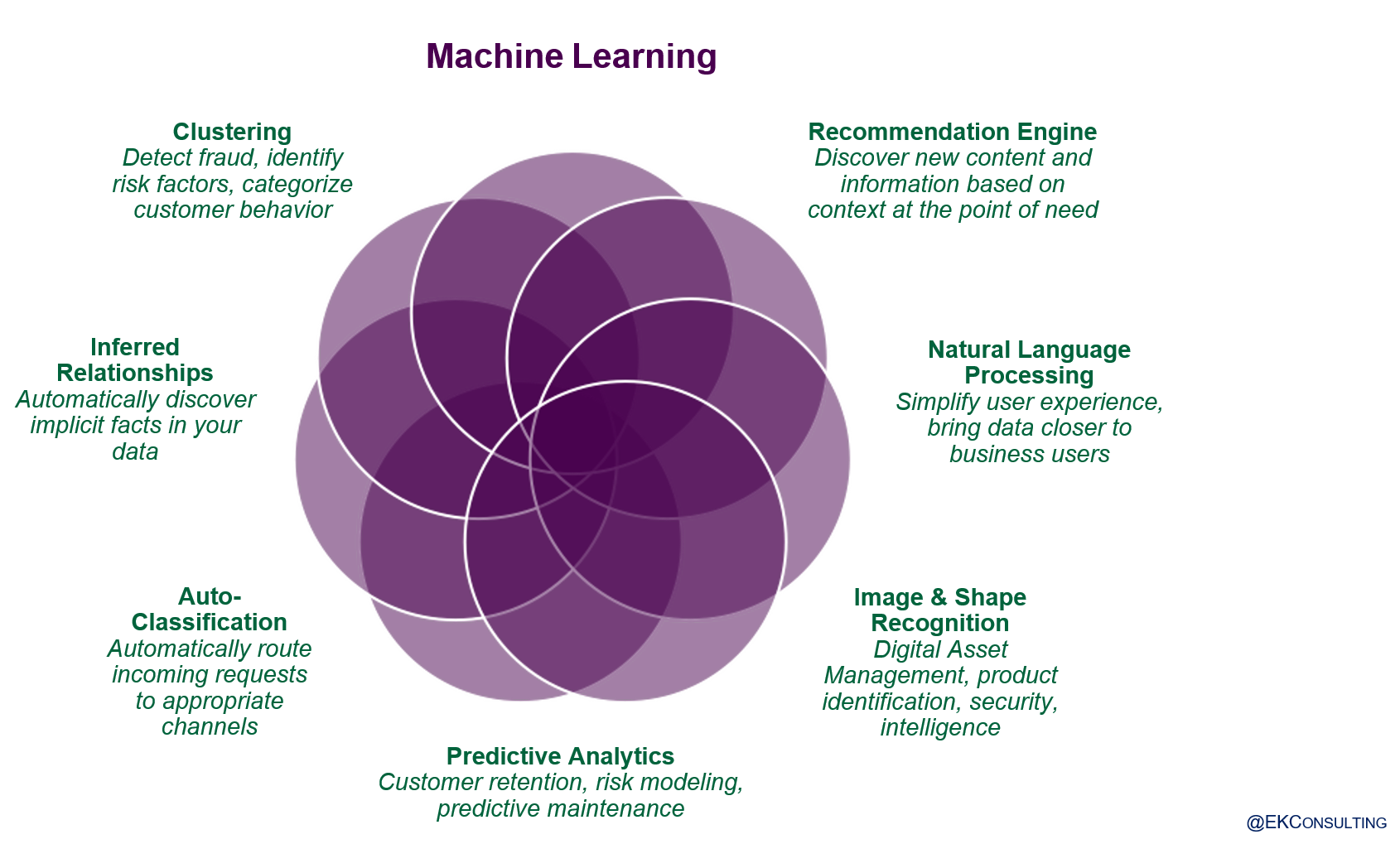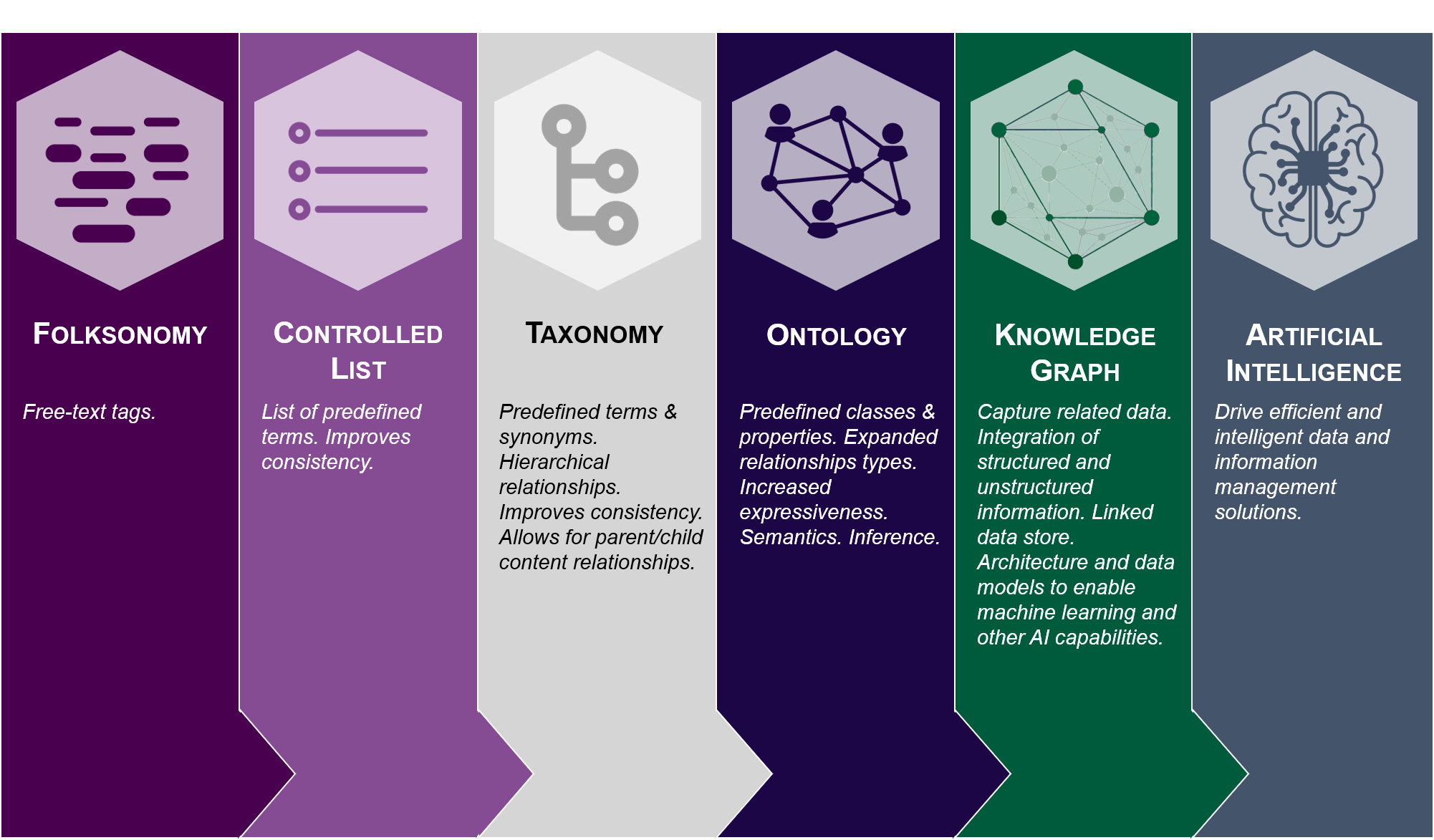Artificial intelligence (AI) is set to be the key source of transformation, disruption, and competitive advantage in today’s fast-changing economy. Gartner estimates that AI will create $2.9 trillion in business value and 6.2 billion hours of worker productivity in 2021. As a result, numerous early adopters are buying into AI within organizations across diverse industries. But many are already encountering challenges as a vast majority of AI initiatives are failing to meet their expectations or provide solid gains on investments. For these organizations, the setback typically originates from the lack of foundation on which to build AI capabilities. Enterprise AI projects end up being isolated endeavors without the needed strategic change to support business practices and operations across the organization. So, how can your organization avoid these pitfalls? It may help to first define what successful AI transformation looks like for the enterprise.
Deconstructing Artificial Intelligence: What are Enterprise AI Applications?
Enterprise AI entails leveraging advanced machine and cognitive capabilities to discover and deliver organizational knowledge, data, and information in a way that closely aligns with how humans look for and process information.
In order to succeed with AI, organizations will first need to identify which of their current enterprise information and data management challenges are a good fit for an AI solution, keeping in mind that AI is not a magic bullet that can solve all business problems. After selecting appropriate use cases, organizations must then build the foundational competencies to structure their information in a manner that is machine-readable. From our experience, the best suited enterprise use cases for advanced capabilities such as artificial intelligence and machine learning include:
 Semantic Search & Natural Language Processing (NLP): Semantic search seeks to understand the meaning and context behind searched terms as opposed to just executing queries against keywords. It takes into consideration language, word variation, synonymous terms, location, and user preferences to simplify user experience by describing information closer to how the user would to another person. For the enterprise, this is made possible through semantic technologies and enterprise knowledge graphs that provide the architecture to discover and surface knowledge across disparate data sources with the flexibility to quickly modify and improve data flows. This further makes it easier to sustainably add new data sources (without making extensive changes) and support future business questions that are currently unknown. Successful organizations leverage semantic search to develop human centered applications using simple natural language (think applications such as chatbots and question answering systems).
Semantic Search & Natural Language Processing (NLP): Semantic search seeks to understand the meaning and context behind searched terms as opposed to just executing queries against keywords. It takes into consideration language, word variation, synonymous terms, location, and user preferences to simplify user experience by describing information closer to how the user would to another person. For the enterprise, this is made possible through semantic technologies and enterprise knowledge graphs that provide the architecture to discover and surface knowledge across disparate data sources with the flexibility to quickly modify and improve data flows. This further makes it easier to sustainably add new data sources (without making extensive changes) and support future business questions that are currently unknown. Successful organizations leverage semantic search to develop human centered applications using simple natural language (think applications such as chatbots and question answering systems).- Scaled Data Governance through automated organization: Auto-tagging and classification automatically route and organize content and data to the right channel(s) to enable findability, discoverability, optimize enterprise information and data/content governance. The most successful data categorization solutions put in place consistent follow-up processes to manage and access data in the right place, removing the manual burden (usually error prone) from humans, and enabling the enterprise to consistently organize data based on predefined access and security requirements for reliable risk management and compliance purposes.
- Augmented categorization and classification of data: Augmented categorization leverages machine logic to organize data based on similarities between content, context, and/or users, and further enables the automatic assignment of non-topical concepts to documents such as sentiment (e.g. positive, negative). Once the enterprise determines the relevant categories and relationship model (think taxonomies and ontologies) that will then be used for this process for the machine to learn to define the organization and management of concepts that are unlikely to be explicitly mentioned in a particular document (e.g. emails, helpdesk requests, etc.). The most relevant business problems we have seen here include enabling intelligent routing for handling support tickets, determining if an email needs a follow up response, or further recommending the relevant response.
- Discover relationships across disparate sources through recommender systems: A recommendation system works by defining relationships between information or content to provide a better understanding of how things fit together. They also track what is relevant, add context to random data, and suggest relevant information and content based on similarity of users, similarity of content, and the relationships between users and content. Recommendation systems using knowledge graphs and machine readable logic pick up on patterns that enable users to discover new facts and knowledge that would have otherwise remain hidden.
- Advanced Analytics: Unlike basic analytics, advanced analytics uses machine learning and large sets of quantitative data to empower organizations to efficiently mine information, discover hidden facts, and identify patterns at a large scale. With this capability, the enterprise is able to understand the business through insights from large and disparate data sources to make relevant and timely decisions, as well as forecast or predict future outcomes.
Why Does the Enterprise Need to Invest in AI?
The most common business drivers for Enterprise AI include:
 Business Pace and Agility: The need to cope with rapid change and the speed of business while successfully balancing effective change management and user experience with increased personalization, knowledge retention, sustainability, and scalability over time is becoming one of the cornerstones of competitive advantage. This, for the enterprise, requires impeccable harmonization and autonomous operation of disparate data and content and information management solutions.
Business Pace and Agility: The need to cope with rapid change and the speed of business while successfully balancing effective change management and user experience with increased personalization, knowledge retention, sustainability, and scalability over time is becoming one of the cornerstones of competitive advantage. This, for the enterprise, requires impeccable harmonization and autonomous operation of disparate data and content and information management solutions.
 Data Dynamism, Governance, and Scale: According to Forbes, 90% of the data and information we have today was created in just the past two years. The volume and dynamism of organizational data and content (structured and unstructured) is growing exponentially, and organizations’ need significant efficiency to glean meaningful insights and value out of it to make better decisions.
Data Dynamism, Governance, and Scale: According to Forbes, 90% of the data and information we have today was created in just the past two years. The volume and dynamism of organizational data and content (structured and unstructured) is growing exponentially, and organizations’ need significant efficiency to glean meaningful insights and value out of it to make better decisions.
 Aging Technology and Infrastructure: Most organizations have been built to organize and manage data and information by type, department, or business function. To add to this complexity, many enterprise leaders say that their systems don’t talk to each other. Increased digitization, coupled with the fast aging of systems, is further fueling these silos and disparate sources for technological solutions to continue providing meaningful support to business problems.
Aging Technology and Infrastructure: Most organizations have been built to organize and manage data and information by type, department, or business function. To add to this complexity, many enterprise leaders say that their systems don’t talk to each other. Increased digitization, coupled with the fast aging of systems, is further fueling these silos and disparate sources for technological solutions to continue providing meaningful support to business problems.
Why Organizations Fail with AI
 The meaning and value of AI in the context of enterprise solutions is continuously evolving. Perceptions of AI have ranged from a robot that will answer all of our questions to that silver bullet application that will automate processes and augment analysis capabilities to predict and make our future better. However, many businesses make the key mistake of assuming that an organization can start and succeed with AI the moment they are given the green light.
The meaning and value of AI in the context of enterprise solutions is continuously evolving. Perceptions of AI have ranged from a robot that will answer all of our questions to that silver bullet application that will automate processes and augment analysis capabilities to predict and make our future better. However, many businesses make the key mistake of assuming that an organization can start and succeed with AI the moment they are given the green light.
From our experience, organizations in various industries are leveraging or experimenting with some form of AI capabilities and seeing remarkable results. However, many have yet to gain any value from their AI investments. Here are a selection of reasons why:
- Lack of clear business applications and relevant use cases: Much akin to any large and disruptive transformation, every organization should first understand how advanced intelligence can impact their business or help solve relevant business problems. Kicking off an AI effort without a business focus leads to a lack of a strategic approach, which fuels misalignment and the lack of operational and cultural changes required to make it a success.
- The assumption that AI is a “Single Technology” solution: AI is not a single technology solution. It is a combination of related technologies that address multi-layered advancement requirements within an organization such as analysis, automation, perception, prediction, etc. Organizations looking to “plug-and-play AI” need to reset their expectations and plan for a multi-phase design, development, and integration effort.
- AI is not fully “there” yet: Although automation has started to relieve the burden of repetitive organizational tasks such as tagging and classification/categorization etc., AI is still an emerging and evolving field. As such, it will continue to require human validation in order to scale effectively, especially in the use cases that require a high degree of accuracy.
- Enterprise information and data is not ready for AI: Machines need to learn a human way of thinking and how an organization operates in order to provide the right solutions. To this end, the information and knowledge we work with on a daily basis needs to be machine readable for AI technologies to do anything with it. “Garbage in, garbage out” is a common refrain among AI practitioners; without high quality, well organized and tagged data, AI applications will not deliver effective results.
What are the Steps to Getting Started with Enterprise AI?
In a previous blog, I shared how to organize your data by building a knowledge graph, creating the foundations necessary for a successful AI initiative. 
From our experience, the following key considerations continue to commonly deliver a scalable and adaptable AI capability for the enterprises we work with:
- Define an overarching vision that outlines a clear meaning, use case definition, and business value of artificial intelligence for your enterprise. This step serves as the institutional footing to set end-user expectations as well as for solidifying internal capabilities to synchronize the “design and build” process.
- Understand organizational information maturity, including assessments of current capabilities, the current state of your content or data, tools, processes, and skill sets, as well an evaluation of any existing AI efforts.
- Develop an artificial intelligence strategy to align AI use cases across functions and departments, as well as define a delivery process that supports the organization’s long term strategy and allows for incremental delivery with regular validation of assumptions.
- Develop a prioritized backlog to incrementally prove and deliver on Enterprise AI initiatives.
- Plan for sustainability and governance. Create a scalable AI project prioritization and backlog creation process for future AI initiatives as well as establish data collection Standard Operating Procedures (SOPs) or data mining processes and confirm data quality and tracking policies for existing data sources.
- Iterate and scale with each new business question and data source.
Many large and successful initiatives we’ve led started small, with defined business goal(s), and were delivered incrementally to validate assumptions and drive enterprise alignment one use case at a time. Whatever your industry, our AI strategy approach, user-centered design approach, and in-house technical expertise can help you get started with a 1 to 2-Day Enterprise AI Foundations workshop that will help you understand artificial intelligence capabilities and their relevance to your unique business needs, as well as develop a shared vision with a strategy/roadmap to drive practical development.
| Get Started | Download whitepaper for Business Cases | Ask a Question |
